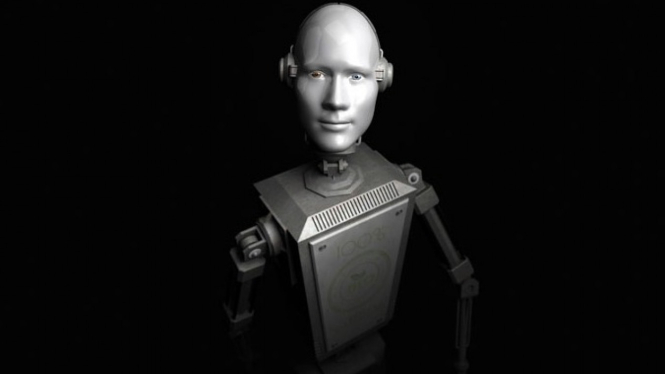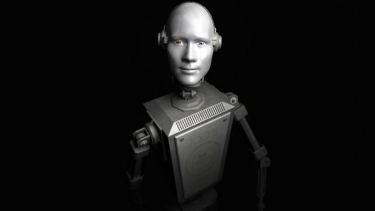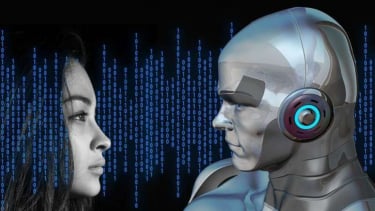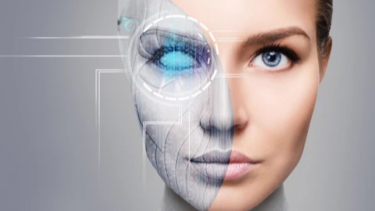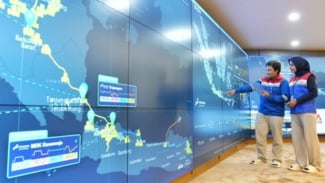Robot Has Possibility to Kill Humans, Is It True?
- Robotic
Jakarta – A robot is a mechanical or virtual agent that is designed to perform tasks autonomously or semi-autonomously, often with a focus on efficiency and precision.
This artificial entity comes in various forms, from industrial robots programmed for manufacturing processes to humanoid robots that can mimic human actions.
The continuous advancements in robotics technology strive to enhance the capabilities of these machines, making them more adaptable and responsive to complex tasks.
Ilustrasi manusia dan robot.
- Deltalink
But, the concept of robots intentionally causing harm to humans raises ethical concerns and underscores the importance of responsible development and deployment of artificial intelligence.
While fictional narratives often explore dystopian scenarios where robots turn against their creators, in reality, the design and programming of robots prioritize safety and adherence to ethical guidelines.
The field of robotics is governed by strict regulations and ethical considerations to prevent any unintended harm. Ensuring that robots are aligned with human values and that appropriate safeguards are in place is crucial in mitigating risks associated with their use.
Artificial intelligence (AI) and sensors and actuators are integrated into robots, which are generally able to complete activities associated with specific types of work.
Different types of robots can undertake a single task or a series of related tasks with varying degrees of flexibility and functional autonomy.
We can't say for sure whether robots will ever be able to take the place of humans. Humanoid robots are taking on many of the tasks traditionally performed by humans, and they're doing so without any human errors.
Fear of technological unemployment as a result of robots taking the place of humans in the workplace has received significant attention.
According to research (Smids, Nyholm & Berkers, 2020), workers may feel that they have less of an aim if robots do most of the work or if the most difficult tasks are taken over by robots.
The development of artificially intelligent systems that can correctly classify a specific region has accelerated in recent years.
Workplace social dynamics may be significantly altered by robots, which could have an impact on the significance of work in this area.
Workers will lose out on some of the meaning they derive from their jobs if robots take their place in large numbers on their teams.
Instead of working with one or more direct human colleagues, a large number of people will be working with a robot, reducing their interaction with one another, their dependence on one another, and their overall sense of collective agency and purposefulness.
Simply put, isolation will lead to a feeling of meaninglessness.
Although it's said that robots can kill humans, there are some drawbacks to the presence of robots, such as the following.
1. The cost of repairs and upkeep is exorbitant
To maintain their performance, robots require ongoing maintenance to keep them in top shape. Robotic programs should be kept up-to-date in response to changing conditions. Getting it fixed after a power outage can cost you a lot of money. Furthermore, the time it takes to restore lost data and the cost of doing so would be prohibitive.
2. Data recovery is a challenge
Robots are excellent at storing large amounts of data, but it is difficult to retrieve it if it is lost. Although it is powerful, it does not compare to the power of the human brain. Robots, despite their ability to perform repetitive tasks, lack the ability to improve over time.
Ilustrasi robot humanoid.
- Shutterstock
Unlike humans, robots lack the capacity to feel and are therefore incapable of making moral decisions. Human-like communication is impossible for machines to achieve because of their lack of emotional intelligence, which is a drawback of robotics.
4. Danger beyond the obvious sense
When robots malfunction or are designed for military purposes, they can pose a threat to humans.
5. Not a shred of wisdom
In the same way that human brains can't think outside the box, robots can't, either. There isn't much thought put into them; they're just a machine.
To top it all off, they follow a set of predetermined instructions and are unable to make independent decisions.
7. Continually provide power at an increased cost
As cool as having robots around sound, unfortunately, it takes a lot of energy to run a robot. Many low-wage workers would be laid off from their jobs, which are the lifeblood of their households.
In order to keep them in good working order, robots require constant attention.
You'd have to fork over a lot of money to acquire robots. On top of that, it would cost a fortune to develop software to meet your specific requirements.
